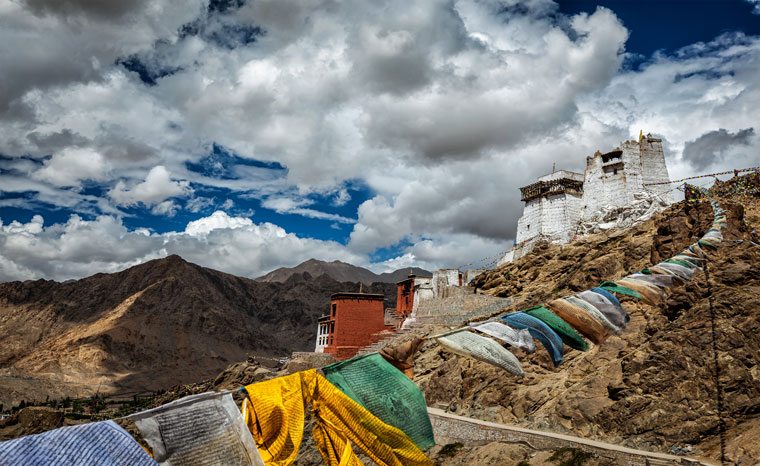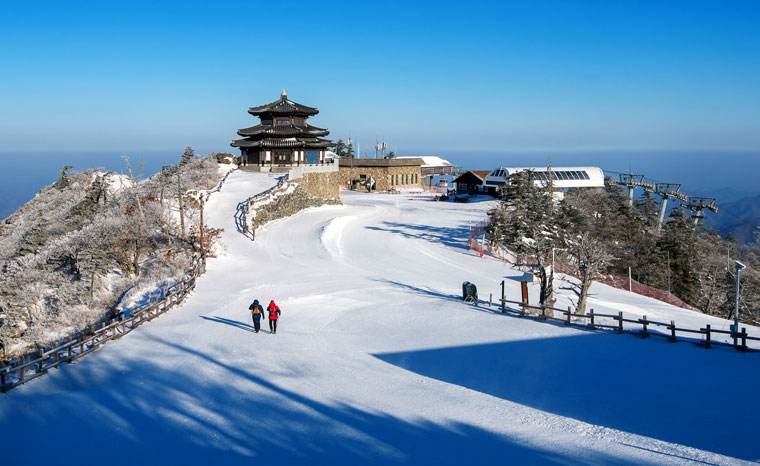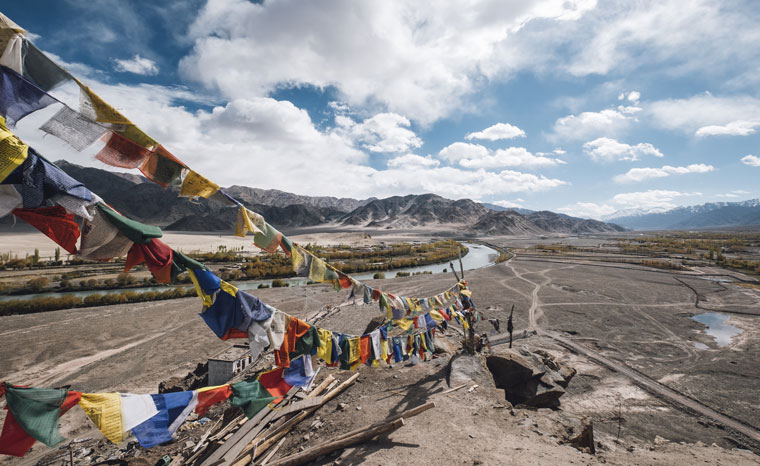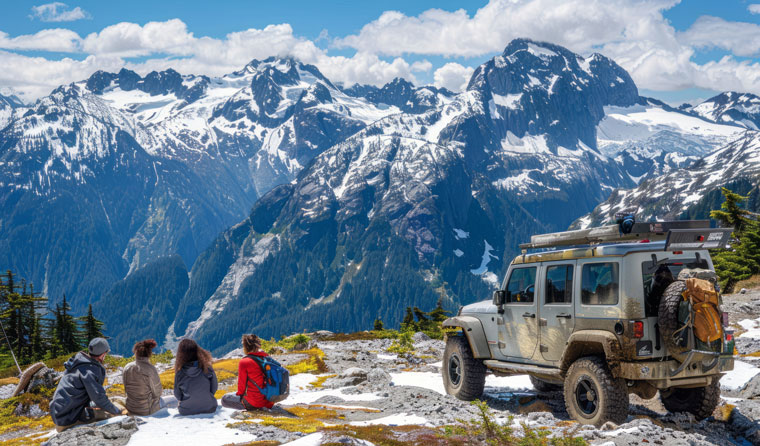Leh Ladakh Trip and Photography Tour Ideas
Leh Ladakh trip is a dream for travelers as well as photographers. The haunting landscapes, towering mountains, and unique culture make Leh Ladakh a paradise for adventurers as well as photography enthusiasts. Whether it is a Hyderabad Leh Ladakh trip or a Leh Ladakh tour by bike from Leh to Ladakh, the region offers unending opportunities to create some breathtaking photographs. The vast, rugged terrains, azure lakes, Buddhist monasteries, and clear night skies will bring to life each frame. This guide will dive into essential photoshoot ideas, travel tips, and useful information to make your Leh Ladakh trip unforgettable.
How to Take Pictures in Ladakh?
It just clicks pictures, but it captures the essence of the place itself—its raw beauty, culture, and serene nature. Here are a few tips on taking fantastic pictures on your Leh Ladakh trip motorcycle tour:
1. Golden Hours: The best shot is when one shoots during the golden hours of morning or late afternoon. Soft light at those times brings warmth to the pictures and adorns natural beauty with long shadows, making the landscape look even more amazing. In November, you can go to some of the finest places to visit when the scenery is at its best during these hours, hence making your photography experience much more exciting.
2. Wide-Angle Lens: A wide-angle lens will help you capture such broad vistas of Ladakh, and that too very vividly because you could encircle the magnificent landscape in your captured frames. You can capture sweeping panoramic shots of mountains, lakes, and valleys.
3. Angles: Have a play with angles! Whether it is a trek or a Leh Ladakh trip, experimenting with different angles could give life to your photos. You can shoot from a low angle by making the mountains appear menacing and shoot from a high vantage point to give a sense of scale.
4. Add Local Culture: their culture, people, and Tibetan Buddhist monasteries give your photographs a depth that makes them truly nice. Let the essence of their day-to-day life be reflected in these shots and capture as much localness as you can to build more story-based travel photo streams.
5. The color contrast between the blue sky: white snow-capped peaks, and the earthy brown mountain ranges is gorgeous. Shishapangma, and Nagagparbat south wall pic;) Let these contrasts get enhanced through post-processing for dramatic effect.
and colorful outcomes.
How Expensive Is a Leh Ladakh Trip?
The expenses associated with a Leh Ladakh trip vary depending on your interests, travel type, and the period of travel. Here’s a list of some of the costs you might incur for your Leh Ladakh trip, be it by bike, flight, or road:
1. Round trip airfare from Hyderabad to Leh: This would vary between INR 15,000 and 25,000 depending on whether it is a lean season and how in advance you booked the tickets. For other towns also the price range will be about the same.
2. Accommodation: Guesthouses, homestays, and hotels of all types. Prices vary greatly, and even budget travelers can find their guesthouse or homestay for INR 800 to 3,000 a night. Premium hotels go well up into the stratosphere.
Food: Being a region, Ladakh combines local and international fare. Budget around INR 500-1,000 per day on meals depending upon whether eaten at local cafes or up-market restaurants.
3. Transportation: Leh Ladakh trip: You can choose to rent a bike for the day. The prices are INR 1,500 to 2,500. There’s also an option of a shared taxi or private cab. That would cost you anything between INR 2,000 to 4,000 per day, depending on the route.
4. Permits: Some of the entry sites, like Nubra Valley, Pangong Lake, and Tso Moriri Lake, require Inner Line Permits. That costs you between INR 400 to 500.
The budget for a moderate-budget traveller making a 7–10-day trip ranges between INR 25,000 to 50,000, which again depends on how you will be planning your trip and the activities you indulge in.
Shaping the Future of Creatives: RVR School’s Path to Photography Excellence By Shashi

10 Travel Photography Tips for Ladakh
1. Scout Locations: The along with you will cover, Pangong Lake, Nubra Valley, Tso Moriri, and Magnetic Hill are the best locations where photography at Ladakh can be done. The same location offers different moods at different times of the day.
2. Details Captured: The temptation to click pictures is dominated by wide views, forgetting that the smaller details add context as well as character to the photographs. Click pictures of fluttering prayer flags, intricate carvings in monasteries, or beautiful folk dresses.
3. Tripod-If you are near a lake and the winds from Ladakh can be extremely forceful: especially when they come from open areas, using a tripod will be of great help to stabilize shots that may require extremely long exposures to catch the movement of the water or clouds.
4. Off the Beaten Track: Ladakh’s true beauty is found in those inaccessible, offbeat locations. Seek out those village photography that few visitors know of, high passes, or hidden lakes. The more remote you venture, the fewer the crowds and the better chance you have for exciting photography.
5. Shadows and Light: The rugged terrain of creates interesting shadows, especially at sunrise and sunset, which can be an excellent resource for experimenting with shadow play within the composition.
6. Portraits of Locals: The faces of the people of Ladakh are rich, full of expressions, and excellent subjects for portraits. Always seek permission before taking their photographs. Try to capture candid shots to frame their true character.
7. Drone Photography: If using a drone, check local regulations regarding restrictions on drone photography. Get the needed permits.
8. Bring Extra Batteries: The Ladakh weather sucks up camera batteries. Always carry extra batteries and keep them warm in your pocket so you don’t miss the shot.
9. Safety: The high altitudes of Ladakh can be killer. Ensure that you acclimatize properly, drink a lot of water, and don’t exhaust yourself while shooting.
10. Photograph the Starry Sky: Ladakh’s pollution-free and transparent sky is an asset for taking shots of the Milky Way or star trails across the mountains for your camera with a long exposure.
What to Pack for a Ladakh Tour?
Pack the correct wardrobe for your Leh Ladakh bike tour or any other adventure since the Ladakh weather can get unpredictable and extreme. What to pack is as follows:
1. Layers: Ladakh can experience changes in temperature from time to time. It would be helpful if you bring layers so you can add or remove them according to the needs of the hour. A good combination will be a thermal as a base layer, followed by fleece, and a windproof jacket.
2. Thermal Wear: Night temperatures can be freezing even at the highest points during summers in Ladakh. Carry inner wares of thermal to keep you warm.
3. Waterproof Jacket: A good quality windproof and waterproof jacket will be a must to carry if one goes on a bike.
4. Comfortable Shoes: For trekking, sightseeing, and photography, high ankle clearance and strong boots will do. The most important part is that you must have comfortable shoes that have been well broken in before the tour.
5. Sunglasses and Sunscreen: At a higher altitude, the sun’s rays are stronger. Therefore, it is a must to protect oneself with sunglasses as well as sunscreen, which has to be reapplied at regular intervals.
How Much Money Does a Ladakh Trip Cost?
The amount that would be spent in Leh Ladakh via motorcycle or otherwise would solely depend on your planning for the trip. Here is a rough estimate:
1. Flight: Round-trip tickets from major cities like Hyderabad cost between INR 15,000 and 25,000. If booked well in advance, you will find most of these deals in the lower-end range.
2. Bike Rentals: In the case of a bike tour to Leh Ladakh, for the same kind of Royal Enfield or its equivalent, rental pricing stands at around INR 1,500 to 2,500 without fuel.
3. Accommodation: Guesthouses or hotels in mid-range cost in the range of INR 800 to 3,000 per night.
4. Food: Meal costs will stand around INR 500 and 1,000 per day; this depends on where you eat.
5. Transportation: If you are planning to reach there by Taxi or Shared Jeep, you will require INR 2,000 to 4,000 a day.
Does a Phone Work During a Leh Ladakh Trip?
Mobile photography in Ladakh offers incredible opportunities to capture breathtaking landscapes, but staying connected can be unpredictable, especially in remote areas.
1. Prepaid vs. Post-paid: Only postpaid mobile connections work in Ladakh. The prepaid connections of other states do not work.
2. BSNL/MTNL: This has the maximum reach in Ladakh. The coverage, however, could be patchy outside Leh and major tourist destinations.
3. Limited Data: Mobile data is quite slow and unreliable in Ladakh. Do all your uploads of Leh Ladakh trip pictures on social media if you have enough to make you want to upload, from Leh, as there the network is somewhat better.
How to Take Care of Skin in Leh Ladakh Trip?
Ladakh can be unforgiving to one’s skin, especially when it is cold and dry. Here are a few tips for your skin:
1. Moisturize: the dry air may make your skin feel tight and cracky; apply a good moisturizer regularly to keep hydrated.
2. Keep yourself hydrated: drinking plenty of water is the key to moisturizing your skin from the inside.
3. Sunscreen: High altitudes will find the sun very intense. You must keep applying broad-spectrum sunscreen to prevent ultraviolet rays from further damaging your skin.
4. Lip Balm: Dry air may prove to be harmful to the lips, and they get chapped easily. Always carry good lip balm to keep the lips soft and supple.
5. Avoid Hot Showers: It may seem so luring to take hot water showers or bathrooms, but it will dry up your skin further. Instead, opt for lukewarm water.
Is Drone Photography Allowed in Ladakh During the Leh Ladakh Trip?
Drone photography is an excellent way to capture the amazing landscapes of Ladakh. There are, however, very strict regulations regarding their use, as follows:
1. Obtain Prior Permissions: The Leh Ladakh trip, authorities will require you to get appropriate permission to operate a drone in Ladakh. This process generally involves an application where you provide details regarding the flight plan and the purpose of use.
2. No Fly Zones: There are some areas, such as near military bases and borders, where drone flying is prohibited. So, confirm the regulations of the local authorities and avoid these no-fly zones.
3. Leh Ladakh Trip Respect for Privacy: Always seek permission before photographing people, especially in remote villages or before the monasteries.
Exploring Local Culture through Photography

Immerse in Local Culture:
1. While planning a Leh Ladakh trip, you can explore and capture the abundant richness of the region’s culture. From vibrant monasteries to bustling markets, this region offers incredible street photography opportunities alongside breathtaking landscapes.
2. Take Ladakhi villages, monasteries, and markets to capture the daily life of the region’s inhabitants.
Respectful Interactions
1. Be courteous with local people to establish friendships that would allow you to make fantastic portrait shots.
2. Get permission before taking close-up shots so that candid and interesting photographs are made.
Cultural Festivals
1. Photograph the colorful extravaganza of local festivals like the Ladakh Festival and Hemis Festival.
2. Record colorful traditional clothing and cultural performances to boost your photoperiod.
Architectural Marvels:
1. This was all about capturing the traditional monastic buildings and Ladakhi mud and stone houses in detail.
2. Mention details on the structures and how they are related to landscape surroundings.
Storytelling through Photography:
1. Engage your camera to tell the stories relating to the cultural heritage of the region as well as the tenacity of the people.
2. Each image can guide a visitor to experience Ladakh magic, be it on a Leh Ladakh bike trip or one’s foot.
Conclusion
The Leh Ladakh trip can indeed be quite an adventure. The landscape opens up into a treasure trove of natural beauty, culture, and endless photography opportunities. Plan your trip with the help of these travel tips and insights from this blog to make it worthwhile. Whether you see all the different landscapes through a Leh Ladakh bike trip or picture them through the lens of your camera, Ladakh is sure to leave an indelible mark on your heart.
So, gear up, plan wisely, and get ready to move on an adventure of a lifetime. The breathtaking vistas of Ladakh await you, with promises to become a paradise for photographers and dreamlands for travellers.
Clarify Your Doubts (FAQ's)
We reimburse all expenses of the Client for the payment of fines and penalties that were caused by mistakes made by us in accounting and tax accounting and reporting.
We reimburse all expenses of the Client for the payment of fines and penalties that were caused by mistakes made by us in accounting and tax accounting and reporting.
We reimburse all expenses of the Client for the payment of fines and penalties that were caused by mistakes made by us in accounting and tax accounting and reporting.
We reimburse all expenses of the Client for the payment of fines and penalties that were caused by mistakes made by us in accounting and tax accounting and reporting.
We reimburse all expenses of the Client for the payment of fines and penalties that were caused by mistakes made by us in accounting and tax accounting and reporting.
We reimburse all expenses of the Client for the payment of fines and penalties that were caused by mistakes made by us in accounting and tax accounting and reporting.
We reimburse all expenses of the Client for the payment of fines and penalties that were caused by mistakes made by us in accounting and tax accounting and reporting.
We reimburse all expenses of the Client for the payment of fines and penalties that were caused by mistakes made by us in accounting and tax accounting and reporting.


